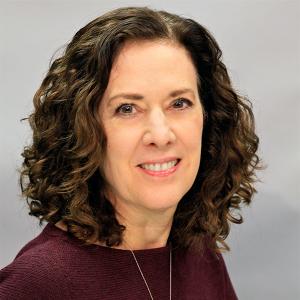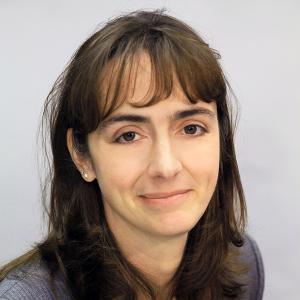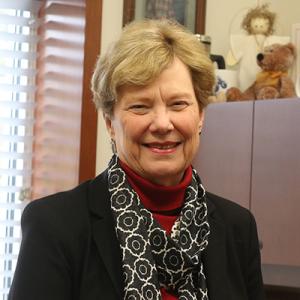Spring/Summer 2020
Talent Newsletter
Talent Newsletter
In this Issue . . . Director's Message | Updating Gifted Programming Standards for Today's Students | The Importance of Assessment in Gifted Education

Today’s students are growing up in a time of perpetual change. My heart goes out to all our families and educators who are working hard every day to stay healthy and safe, keep students learning, assist students in understanding and cope with difficult times and significant upheaval, and meet new needs such as teaching and learning online. How can today’s educators continue to provide a quality learning experience while adapting to changing environments and needs?
In this issue of Talent, we discuss an important guide for optimizing educational programming: the National Association for Gifted Children’s PreK-Grade 12 Gifted Programming Standards.
Without a federal mandate for gifted education, the National Association for Gifted Children (NAGC) is committed to setting standards for meeting the needs of advanced learners and providing the guidance necessary to promote their growth and achievement. Informed by research from scholars and insights from expert educators around the globe, NAGC’s Gifted Programming Standards, first developed in 1998, provide educators with effective, evidence-based practices, providing a valuable tool for developing and evaluating educational programming.
Two years ago, a committee joined to further develop these standards in light of new research, technological advancements, and two critical issues that have been at the core of my efforts as an educator, researcher, and advocate: equity and inclusion. Center for Talent Development’s leadership has worked closely with NAGC over the years, and we were excited to have CTD Associate Director Dr. Susan Corwith take on the charge to chair the NAGC Gifted Programming Standards committee.
In this issue, Dr. Corwith and Dr. Susan Johnsen, a member and previous chair of the committee and author of numerous texts on gifted identification and assessment, discuss the updates to the standards in light of recent paradigm shifts in the field of gifted education. The updated standards take a holistic approach, including:
Dr. Johnsen delves into how to expand access and make assessment, a key tool for effective programming, more differentiated, multifaceted, and equitable in order to meet the needs of individual students. Assessment is particularly important for advanced learners, who may hit the ceiling on grade-level assessments and require additional challenge in order to grow.
It is a unique time in the field of education, and I look forward to seeing where our current experiences and these new standards will lead us. Collaborations across disciplines are opening new possibilities and insights. Agile educators and leaders must continually adapt to provide support based on the situation at hand. It is imperative for us to change with our students.
![]()
Paula Olszewski-Kubilius
Director, Center for Talent Development

“We had a pretty good sense going into the review process that we were going to be building on a solid foundation that was established [in the 2010 NAGC standards],” says Dr. Susan Corwith, a CTD Associate Director and chair of the committee charged with updating the National Association for Gifted Children’s PreK-Grade 12 Gifted Programming Standards. However, since the standards were last updated, Corwith notes that there has been notable growth in the area of talent development and in the field of gifted education as a whole. Broader acknowledgement of the “developmental nature” of giftedness (as opposed to a set of fixed traits) and a greater attention to equity and inclusion meant the previous standards needed to be revisited and refreshed.
Updating the standards was a two-year process, and Corwith says she “felt honored” to chair the committee, recognizing the great minds and experts in the field who shaped the last version of the standards in 2010. Some of those architects remained for the most recent revision process, and with the new committee members, they reached out through a variety of networks to recruit many different stakeholders who could be involved.
Rather than seeking to completely revamp the 2010 standards, Corwith says she and the committee looked at the updates as an opportunity to “supplement” the existing guidelines. Drawing from a knowledge of today’s educational imperatives (and an extensive literature review), the committee worked to determine which programming guidelines needed revision and which outcomes and practices required an entirely new approach in light of the shifts in field of education as a whole, particularly related to special education, social and emotional learning, and technology.
The standards are designed to support the whole student, including influences outside the classroom. Self-understanding is one of the student outcomes for the learning and development standard, and Corwith explains that this involves not only helping students understand their talents and how to develop them, but also how to apply knowledge and skills in life. Corwith says it’s about “who [the students] are when they go home or when they’re in their communities. How do they bring their experiences into the work that they’re doing or the goals that they’re setting?”
Technological fluency is also part of the competencies outlined in the new standards, and Corwith notes that this skill set has become more valuable for students and educators during the past decade. Today’s students use technology in unprecedented ways during their day-to-day activities, and those learners—and their teachers—need to understand how to wisely incorporate technology in schools. This is even more critical in response to the COVID-19 era, when a majority of teaching and learning has transitioned online. Whether by using assistive technology in the classroom or by exploring the potential of social media platforms, educators can reach a wide range of learners and create rich learning environments through technology. But, significant challenges remain, with equity and inclusion leading the list of priorities.
In addition to concerns about equity, there is the challenge of information fluency. Though technology is ubiquitous and the Internet is a boundless resource, Corwith suggests all students need to be taught to thoroughly examine the information they encounter online. “Looking at the source of the information is critical,” she says of online content, urging students to understand “where it’s coming from, what the influences are, and its intended impact.” These elements are now part of communication outcomes in the standards. Additionally, Corwith suggests teachers be mindful of how the introduction of technology impacts student dynamics and communities.
For educators—including school administrators—who want to implement the new NAGC standards, but aren’t sure where to begin, Corwith offers advice. After thoroughly reading the standards, educators should identify a particular priority in their school or district and focus on that (rather than trying to implement all standards at once).“That’s a great place to start; introducing the standards into the conversation, and saying ‘how do these standards support the work we already do and help us create a path to improvement?’” she says. Key stakeholders should be included in the conversation as well, including parents, students and members of the broader community.
Corwith also points to NAGC and state associations, such as the Illinois Association for Gifted Children (IAGC), as sources for contacts who can explain the standards and discuss ideas for implementation. Corwith tells educators to “start small, and think about what you’re already doing and how to build on that.” Standards can be used in program development, program evaluation, and to guide professional development and hiring, Corwith says.
Center for Talent Development at Northwestern • Dr. Susan Corwith on the Giftedness Knows No Boundaries NAGC Campaign
Parents also need to know that the standards exist, and reading the standards could give parents the tools to discuss student needs with school administrators. Though the standards aren’t necessarily designed for parents, Corwith says they are intended to “help promote conversations about best practices and provide a pathway for advocacy, both for educators and for the families of the students themselves.”
Now more than ever, as schools and families address the new challenges of teaching and learning presented by the pandemic, and in the face of ongoing, systemic racism, standards and their related best-practices are a resource and necessary means to assuring that all students have the opportunity to reach full potential. Parents, educators, administrators, students, and entire communities must work as partners to innovate and provide the supportive learning environments that our students need and deserve.

When developing effective programs for gifted students, assessment means more than just giving a test. Assessment is multifaceted, consisting of valid and reliable identification methods aimed at a continuous review of each child’s learning progress. The National Association for Gifted Children’s updated Gifted Programming Standards focuses on assessment as a key building block for effective programming, and recommends targeted, evidence-based practices for educators. A member of the NAGC Gifted Programming Standards committee, Dr. Susan Johnsen, recently shared her thoughts on the uses of assessment in an interview with CTD.
Johnsen—a professor emeritus in the Department of Educational Psychology at Baylor University, and the author of numerous texts on gifted identification and assessment—worked on the previous NAGC programming standards as well. She notes that assessment should be “comprehensive and sequenced,” supporting students at each level from PreK through grade 12. To ensure that gifted students are properly identified and supported, schools must provide equal access to resources and varied ways to measure ability and learning over time.
Appropriate assessment preparation is important in facilitating equal access to gifted programming, Johnsen notes. She emphasizes the need for teachers, counselors, and parents to be aligned in their understanding of an advanced student’s needs, and anyone who might be involved in recommending a child for gifted services should understand “what behaviors and characteristics to look for” and have knowledge about “accelerated instruction and advanced and differentiated options for curriculum and instruction. Johnsen also highlights the necessity to minimize bias in formal assessments; the tests should measure a student’s abilities and not reflect a bias against a student’s background or identity.
“You’d still want to use multiple assessments, and you’d still want to include those things we know provide a better opportunity to find youngsters from diverse backgrounds, or who are underrepresented in gifted programs”
Since tests are not infallible, the standards advise the use of “multiple indicators of potential and achievement” in gifted assessment, and Johnsen explains that these indicators could come from a variety of useful sources. Benchmarks can be both quantitative or qualitative, and valuable indicators could include “anecdotal information” gathered while teaching, as well as the results of “dynamic instruction,” in which a concept is taught, then tested to measure knowledge acquisition rates. A portfolio approach can also be used in assessment, in which a student and teacher set goals and track progress over a collection of projects. Johnsen maintains that the new gifted programming standards are applicable regardless of the grade in which a student is assessed. “You’d still want to use multiple assessments, and you’d still want to include those things we know provide a better opportunity to find youngsters from diverse backgrounds, or who are underrepresented in gifted programs,” she says. “We need to make sure that students have access to the services in schools,” Johnsen says.
There are several evidence-based ways to approach identification: approaches and tools may include front-loading talent development activities that enable exceptional ability to show, universal screening of all students for potential and advanced learning, using locally developed norms to identify the students with high potential in every school, assuring assessment tools are in the child’s preferred language for communication or using nonverbal assessments, and building relationships with students to understand their unique challenges and needs. More schools are beginning to employ “universal screening” practices—in which all students are tested—rather than using a referral process to identify advanced learners. In the absence of a national standard for gifted identification, Johnsen notes that schools assess for giftedness at varying grade levels depending on the state guidelines, policies and legislation (and in some states, gifted screenings are not required at all). Even without state or federal requirements, schools should aim to help their students express and develop their gifts and talents, requiring knowledge of equitable assessment approaches.
Center for Talent Development at Northwestern • Dr. Susan Johnsen Explains Ways to Practice Differentiated Assessments.
Differentiated assessment is vital to making sure instruction fits the unique needs of each student. “Sometimes the assessment a school uses for a general population doesn’t have enough ‘ceiling,’” Johnsen explains, which means such assessments can’t fully measure proficiency in students working above grade level. Because of this, schools must use above-level assessments that fit the content area—e.g. above grade level mathematical reasoning assessment for an accelerated math program. Without sufficient differentiation in assessment, Johnsen says, “you homogenize your classroom:” students are only able to access what the group in the middle needs, instead of a range of appropriate supports for all learners, including advanced learners.
Students should take an active role in measuring their learning progress and setting goals. “I think one of the most important things we can teach students is how to self-assess, and how to access resources they might need,” Johnsen says. In the classroom, Johnsen has had success with students keeping track of their own objectives, growth, and progress—either electronically, or through an old-fashioned paper and pencil—and meeting one-on-one with instructors to discuss new potential learning experiences. By engaging in this kind of self-assessment practice, students can also begin to consider long-range goals in their areas of particular skill.
Johnsen says teachers as well as school leadership should stay informed, and she suggests schools keep “banks” of learning activities and related assessments teachers can draw on. In this model, a fifth-grade math teacher (teaching to students of varying math abilities), could administer assessments to see what the students know, then pull the appropriate learning activities from the school’s bank of resources.
Teachers can also experiment with grouping students by ability, and by using varied styles of instruction, Johnsen says. She also recommends that teachers form professional learning communities (for example, a cohort of fifth- and sixth-grade instructors), and teacher preparation standards and other guidelines are also available through NAGC.